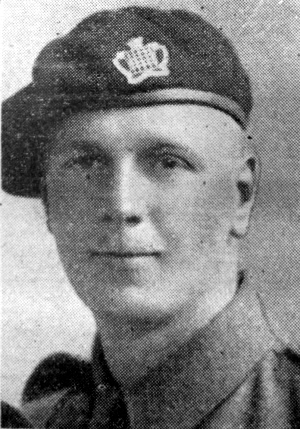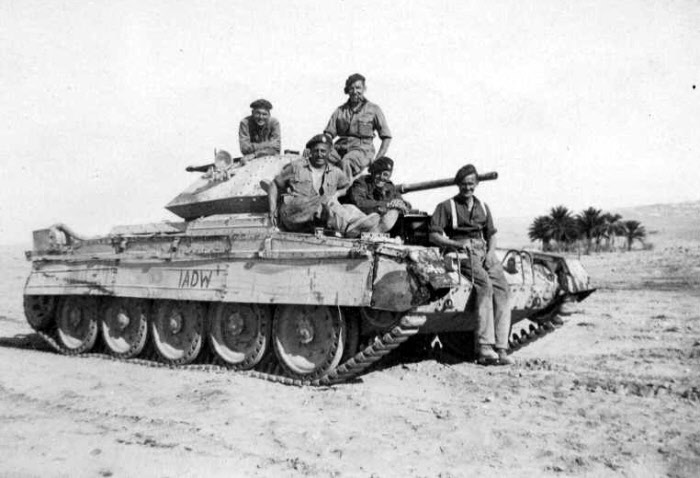
Walter Hall was born in Pontefract on the 7th April 1910, the son of Crigglestone born miner, Robert Thomas Hall and Ossett born Gertrude Fozard, who married at the New Wesleyan Chapel, Wesley Street, Ossett on the 17th August 1907. Robert Thomas Hall, aged 25 years, a miner, was living at his parents’ home at Park Square, Ossett and Gertrude, aged 23 years was a cloth sorter of Runtlings Terrace, Ossett. Gertrude was the daughter of rag merchant of Edward Fozard and his wife Sarah of Ossett.
Walter’s father, Lance-Corporal Robert T. Hall was to lose his life, aged 35 years, at the disastrous Battle of Bullecourt on the 3rd May 1917, whilst serving with 2nd/5th Battalion of K.O.Y.L.I.
In 1911, Robert Hall and his wife Gertrude were living at 1, King Street, Pontefract, now with their first born child, Walter. They had two more children: Horace, born summer 1912, and Gladys, born early 1915, both in Pontefract.
By September 1939 Walter, aged 29 years, was living at 13, Headlands Road, Ossett and working as a retail furniture salesman. Clara Fozard, probably his aunt, a spinster aged 60 years, was living with Walter as a paid housekeeper. Walter Hall of 13, Headlands Road, Ossett died on the 1st June 1942 on war service and probate was granted to Horace Hall, joiner. Effects £495 15s 8d.
Walter Hall was a part of the famous 7th Armoured Division or “Desert Rats” that defeated Rommel in North Africa. His regiment, the 2nd Royal Gloucestershire Hussars, as part of 22nd Armoured Brigade, embarked for Egypt in 1941 to join the 8th Army. Here, to begin with, it crewed Crusader tanks. During the desert campaign against Rommel that followed, they had to convert to the 1929 American ‘Honey’ and then the poorly manoeuvrable ‘Grant’ tank, which the Americans had declared obsolete in 1936. Fortunes fluctuated and the Regiment distinguished itself on numerous occasions but suffered heavy casualties in the process. These reduced it to less than a squadron in strength.
The War Diary1 for the 2nd Royal Gloucester Hussars for the 1st June 1942 tells us exactly how Walter Hall was killed.
“Two patrols sent forward under Captain Gordon-Creed and 2nd Lieutenant Jeffrey to Bir-El-Aslagh to “test” tanks on ridge. Tanks found to be derelict, but anti-tank guns dug in on ridge amongst tanks. One tank hit. Crusaders handed over to 4 CLY. Composite Sqn returned to A1 Capt Gordon-Creed to B1. Killed 2, Wounded 1.”
Walter Hall’s Crusader tank was hit by the German anti-tank gun and he was one of the two men killed that day.
The “Ossett Observer” had this obituary for Walter Hall:2
“Ossett Soldier Killed – Serving In The Middle East – An official notification was received by the War Office on Friday, that Lance-Corporal Walter Hall, aged 32, was killed in action in the Middle East on June 1st. He was unmarried and lived with his brother and sister-in-law, Mr. and Mrs. Horace Hall, at 13, Headlands Road, Ossett.
He was born in Pontefract, and when two years old came to live in Ossett with his parents, the late Mr. and Mrs. Robert Hall. Educated at Southdale and Ossett Grammar Schools, he entered the service of the drapery department of Ossett Co-Operative Society; he was transferred to the furnishing department, and subsequently secured the post of under-manager of the furnishing department of Batley Co-Operative Society. He was a faithful member of Wesley Street Church, and was for a time secretary of the Sunday School.
Called up in July 1940, he joined the Royal Gloucester Hussars (mechanised) and served as a tank gunner. He went to the Middle East in 1941, and had taken part in all the Libyan engagements up to the time of his death. He was much esteemed by his many friends and the deepest sympathy is felt with the family in their sorrow. His father was killed in the last war.
At Wesley Street Methodist Church on Sunday morning, Pastor Radnor, who conducted the service, made reference to the sad event, and offered prayers to the relatives.”

Above: A Crusader tank and crew in the Libyan desert in 1942. The Crusader, deployed to North Africa after the disaster of the Battle of France 1940, was still a broken design. A 2 pounder gun (later upgraded to 6 pounder) with 40mm of armor at max. It’s only saving grace was that it was fast thanks to its light weight of 18 tons. It was no match for its contemporary German designs like the Panzer III J, and the Panzer IV F2, but did reasonably well against the Interwar, early marks of the Panzer II, and III.
Trooper Walter Hall died on the 1st June 1942, aged 32 years, and is buried at grave reference 11 D 1, at the Knightsbridge War Cemetery, Acroma, Libya. Knightsbridge War Cemetery is located 750 metres south of the main road from Benghazi to Tobruk, about 25 kilometres west of Tobruk.
The defence against Rommel’s drive across Cyrenaica towards Suez consisted of a number of irregularly spaced strong points or ‘boxes’ linked by deep minefields. Those nearest the Axis forces were held by infantry, while those further back served as reserve static positions and as bases from which the armour could operate. The chief ‘box’, known as Knightsbridge, was round a junction of tracks about 20 kilometres west of Tobruk and 16 kilometres south of Acroma, commanding all the tracks by which supplies came up to the front. The Eighth Army’s advance fuelling stations and airfields were at Acroma, El Adem, El Duda, Sidi Rezegh and Gambut, while by February 1941, Gazala aerodrome, taken from the Italians early in the campaign, housed two Commonwealth squadrons. Knightsbridge was thus a key position, and the pivot on which the armour manoeuvred during the heavy fighting which commenced in late May 1942. Fierce actions were fought at all these places, and a battlefield cemetery was created at each for the burial of the dead.
The graves of many of those who gave their lives during the campaign in Libya were later gathered into Knightsbridge War Cemetery from the battlefield burial grounds and from scattered desert sites. The men who fought and died with them, but have no known grave, are commemorated on The Alamein Memorial which stands in El Alamein War Cemetery, Egypt.
There are now 3,651 Commonwealth servicemen of the Second World War buried or commemorated in Knightsbridge War Cemetery. 993 of the burials are unidentified and special memorials commemorate a number of casualties known or believed to be buried among them. There are eighteen Non Commonwealth burials here, including one Polish soldier, and one non world war service burial.3
References:
1. War Diaries for the 2nd Royal Gloucester Hussars.
2. “Ossett Observer”, Saturday, July 4th 1942.